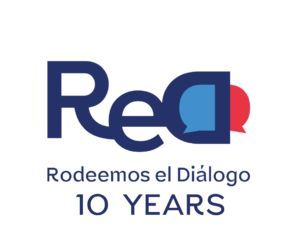Truth Commission Snapshot 17
Beyond Victims: Acknowledging the Indigenous Truth
“In times of war, the truth is often shamed, obscured and kept at a distance”; Daniel Maestre, a traditional doctor from the Kankuamo community shared these words during a meeting with indigenous groups of the Caribbean. This was one of several held over the past few months, by the Truth Commission, on the subject of #LaVerdadIndigena (‘the Indigenous Truth’) across the Caribbean, Andean, Pacific, Amazonian and Orinoquian regions of Colombia. These events aimed to allow indigenous communities to share their experiences of conflict with Colombian society, culminating in the sixth Encuentro por la Verdad (Truth Encounter) on 23 October: “Indigenous Communities in Danger of Physical and Cultural Extinction: Their Dignity, Resistance and Contributions to Peace”. This snapshot provides an insight into the search for the Indigenous Truth and how providing a platform for Colombians to hear about their experiences both as victims and as defenders of peace has marked a crucial step in the recognition of abuses and the guarantee of non-repetition.
Recounting Experiences
Throughout the series of events, members from Colombia’s 115 indigenous peoples provided personal accounts of the victimisation endured by their respective communities as a result of the conflict. It is estimated that the conflict has left 400,000 indigenous victims from at least 137 massacres perpetrated in their ancestral lands, and countless more from other acts of violence. These cases must be viewed in relation to the greater cultural and environmental damage inflicted by the conflict; many indigenous territories have little-to-no state presence and, moreover, an abundance of natural resources, which have encouraged the presence of armed groups. In these perceived epicentres of violence, many indigenous groups have been forcibly displaced and seen their historic roles, as protectors of their ancestral land and Colombia’s environment, threatened. The gravity of these actions has led 68 communities to be at risk of physical and cultural extinction, according to the National Indigenous Organisation of Colombia. It was also acknowledged that the internal armed conflict is a continuation of other ancestral violences and acts of exclusion, racism and abandonment. These began with the era of Colombia’s colonisation, and have since been aggravated by other actors, including the presence of multinational petroleum companies in the region of Orinoquía.
Guardians of Peace and Land
The encuentros served as critical spaces for making these communities visible, not just as victims, but as defenders of their territories and their culture and more than second-class humans. Recognising the Indigenous Truth invites Colombians to call into question the country’s relationship with and understanding of its indigenous communities. The determination shown by indigenous groups to continue practising their spirituality, their traditional medicine, their own languages, and their own economy, within their ancestral territories must be seen as acts of resistance to the legacy of violence inflicted against them. Embodying this effort, the Truth Commission’s encuentros opened spaces for indigenous groups to demonstrate their customs, such as the Tikuna people’s call to give thanks and their ritual to heal the Earth during the meeting recognising the Indigenous Truth of the Amazon.
Recognition and Non-repetition
Two notable successes of the Commission’s encounters are statements from key actors in the conflict. Following the sixth encuentro, Rodrigo Londoño, former commander-in-chief of the FARC-EP, acknowledged how indigenous communities are among the most affected victims of the conflict. Londoño admitted the group’s responsibility for massacres, such as the 1986 killing of eight indigenous leaders in Murindó, which was part of the FARC-EP’s “cleansing” strategy in order to assume control of the territory. For this, and other crimes, including gender-based violence against indigenous women, Londoño asked for forgiveness on behalf of his organisation.
A similar statement was given by Salvatore Mancuso, former second-in-command of the United Self-Defence Forces of Colombia (AUC) paramilitary group. As part of the encuentro, Mancuso acknowledged his role in the assassination of the indigenous leader Kimy Pernia Domico from the Emberá Katío community. In a public conversation with Kimy’s daughter in October 2020, he elaborated on his previous admission of guilt in 2007, citing that he had not been allowed to engage in direct communication to apologise, reconcile or clarify the truth with victims. Mancuso called upon the government and other actors within the conflict to engage in similar dialogues to ensure non-repetition of these acts of violence.
Indigenous groups also presented their own recommendations on how to ensure their physical and cultural survival, as well as non-repetition. A key takeaway was the need to drive an intercultural education system in Colombia which would highlight the richness of indigenous groups as well as the country as a whole. This message has been reiterated by Belkis Izquierdo, magistrate of the Special Jurisdiction for Peace (JEP), and is essential to creating a national, collective memory. As asserted by Marcelino Sossa of the Sikuani community, the widespread lack of public awareness regarding the traditions and practices of indigenous communities contributes to their victimisation and threat of cultural extinction.
Embrace Dialogue celebrates indigenous communities’ participation in truth-telling and the Truth Commission’s recognition of the Indigenous Truth as a crucial component of national memory. We call upon Colombian society to acknowledge the essential place of these communities by learning about their traditions, as well as their important contributions to peace.


